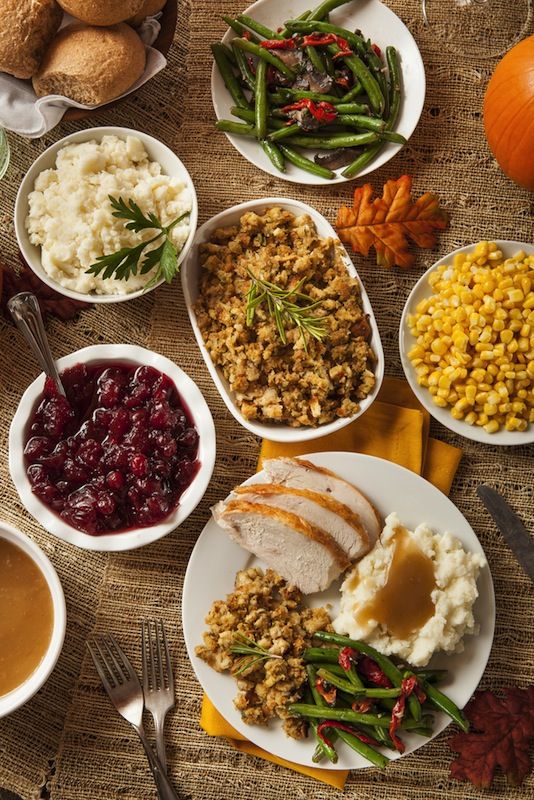
What happens when a vegan, a person on the Paleo diet and a gluten-free eater sit down together to a Thanksgiving dinner?
It sounds like the intro to a joke, but it's a real conundrum for the many people who have guests and loved ones with multiple dietary restrictions. Though it can be tough to plan a meal in which every guest can eat everything, there are several strategies that can make Turkey Day dining healthy and nutritious for everyone, experts say.
"The biggest thing is just keeping it simple," said Cassie from DietitianCassie.com (whose last name is Bjork), a registered, licensed dietitian and health coach. "The shorter the ingredient list, the better."
Creating a meal with lots of side dishes that emphasize fruits and veggies can also make the Thanksgiving menu a crowd-pleaser, Cassie said. [Thanksgiving: 10 Tips for Sticking to Healthy Portions]
Simple meals
Those who follow the Paleo diet typically shun grains, sugars, dairy and processed foods, and instead try to eat foods that ancient hunter-gatherers would have eaten before the agricultural revolution. Those foods usually include fish, wild game and poultry, as well as fruits, vegetables and eggs. (Some on the diet also eat nuts.)
For those folks, simple staples such as green-bean casserole or mashed cauliflower work well. The green beans can be made with a healthy serving of coconut oil and homemade mushroom soup. Turkey is an easy staple that Paleo dieters can enjoy while getting adequate protein and fat, Cassie told LiveScience.
Sign up for the Live Science daily newsletter now
Get the world’s most fascinating discoveries delivered straight to your inbox.
Other dishes can be modified to make them Paleo-friendly. For instance, sweet-potato casserole can be made without the marshmallows and cream.
Carb-conscious
Many people (including people on the Paleo diet) now follow a gluten-free diet, avoiding any foods that contain the protein gluten.
Still others are struggling with type 2 diabetes and must stick to a low-carb diet as a result.
For all these groups, it's best to steer clear of white flour as a thickener, but either coconut or almond flour can be used as a substitute.
For dessert, make a coconut-milk, pumpkin custard instead of a pie, she said.
And for those who eat nuts, one option is to make the crust out of nuts, Franziska Spritzler, a registered dietitian and diabetes educator who runs lowcarbdietitian.com, wrote in an email. Having some unsweetened whipped cream on the side can provide a satisfying, low-carb treat, she said.
Even without the sweet treats, there are plenty of other options on the traditional Thanksgiving table for the carb-conscious.
"Turkey is virtually carb-free and an excellent source of protein," Spritzler wrote. "Green beans, salad and other low-carb vegetables are important to consume because they provide fiber and phytonutrients (plant nutrients) that have beneficial health effects."
Side dishes
Vegetarians don't eat meat or fish, and vegans typically avoid all animal products, but they, too, can enjoy green beans, sweet potatoes, cranberry sauce and other side dishes.
"The main thing is just keeping your side dishes free of any type of meat," Cassie said. "For the person who's not vegetarian, they can get plenty of protein from the turkey."
Many guests are also happy to bring a dish to share, which can ensure that everyone eats happily, Cassie said.
And before pulling out all the stops in a gluten-free, low-carb, vegan, Paleo Thanksgiving, check in with your guests as well, Spritzler said.
"Some low-carbers may choose to only eat the turkey and vegetables anyway, so it's a good idea to ask if they'd be interested in low-carb versions of their favorites before preparing them," Spritzler said.
Follow Tia Ghose on Twitter and Google+. Follow LiveScience @livescience, Facebook & Google+. Original article on LiveScience.

Tia is the managing editor and was previously a senior writer for Live Science. Her work has appeared in Scientific American, Wired.com and other outlets. She holds a master's degree in bioengineering from the University of Washington, a graduate certificate in science writing from UC Santa Cruz and a bachelor's degree in mechanical engineering from the University of Texas at Austin. Tia was part of a team at the Milwaukee Journal Sentinel that published the Empty Cradles series on preterm births, which won multiple awards, including the 2012 Casey Medal for Meritorious Journalism.












